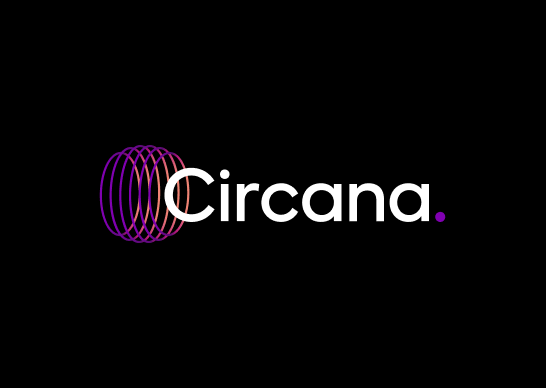- Circana

- 5 hours ago
- 7 min read

Where, when, and how people watch television have changed over the past several years, and so have advertising campaigns airing on a broader array of traditional and digital channels. As marketers weigh their investments, they are ultimately (and rightly) driven by the need to measure the real effectiveness of their TV advertising – how the needle actually moved on sales versus simple purchased exposure. Today, it’s possible to accurately gauge the success of a campaign and identify opportunities for the best reach and return on investment (ROI), going beyond traditional audience measurement to the deployment of marketing mix modeling (MMM) statistical techniques and the use of store-level data. These and other tools enable brands and retailers to gain insights on incrementality, attribution, and unified measurement so they can plan and pivot when needed for the best results. , and unified measurement so they can plan and pivot when needed for the best results.
Changing Channels: TV Formats and Advertising Methods
The television landscape is increasingly fragmented, with more and different formats and screens. Understanding the different channels is the first step toward effective measurement and revenue-generating investments.
Linear and digital TV
Traditional television, also known as linear TV, features scheduled programs on specific networks. Linear TV remains a popular format, with large audiences in global, national, and local markets tuning in to live sporting events, news broadcasts, and scripted and non-scripted shows. Its popularity and ubiquity make it an effective format.
Digital video includes content airing on connected TVs (CTVs) and smart TVs tied to the internet. Other forms of digital video include over-the-top (OTT) services that deliver video content directly to viewers; broadcast video on demand (BVOD) from a network's app; subscription video on demand (SVOD) from subscription platforms; and free ad-supported streaming TV. All these services are growing and becoming entrenched among many demographics, especially younger consumers.
The new digital interface empowers advertisers with advanced audience targeting capabilities, including purchase-based targeting — a powerful strategy that goes beyond traditional demographic segmentation.
Rather than relying solely on broad categories like age, gender, or location, purchase-based targeting leverages actual consumer buying behavior to identify audiences most likely to engage with specific products or services. This approach uses transactional data — such as frequency of purchases, product categories, and brand preferences — to build highly accurate consumer profiles.
For example, a retailer launching a new line of athletic wear can target individuals who have previously purchased fitness apparel or running shoes, rather than simply targeting people aged 18 to 35. Similarly, a pet food brand can focus its advertising on households that have recently bought pet supplies, ensuring the message reaches active pet owners rather than a general audience.
This precision leads to more effective campaigns, reducing marketing waste and increasing return on ad spend (ROAS). Advertisers can allocate budgets more efficiently, personalize messaging, and improve conversion rates by speaking directly to consumers whose past behavior indicates a high likelihood of purchase.
In short, purchase-based targeting transforms marketing from a broad reach exercise into a data-driven strategy that delivers relevance, efficiency, and measurable impact.
Measurement by TV type
As content varies across linear and digital channels, so does TV advertising measurement. Linear TV, for example, has traditionally been measured through target rating points (TRPs) and gross rating points (GRPs). These measurements assess the reach and frequency of a campaign against a targeted audience.
In today’s digital TV world, video content is generally quantified by impressions, which can be nebulous at times or open to interpretation. The quality of impressions can vary based on the duration of an ad (6 seconds versus 30 seconds) or ad format, such as a skippable or non-skippable spot.
Strategies for Effective TV Advertising
During the TV campaign planning process, marketers should first take time to define and understand their strategies and their execution options — why they are doing it, how they intend to roll out campaigns, and how they plan to make future adjustments based on measurement findings.
Short-term measurement strategies
Immediacy is a consideration for marketers as they map out their TV ad strategies. Various short-term strategies can be deployed to connect campaigns to sales following the broadcast of an ad.
One potent short-term strategy is a market lift test. For example, a marketer could run a campaign with only linear TV in one region and a campaign with linear TV plus BVOD in another region. By comparing the sales lift in both regions using an A/B test, the marketer can precisely measure the incremental value that BVOD added to the campaign. One important caveat: The success of these tests hinges on the quality of the data, so providing granular inputs on where and when campaigns ran is critical.
Store-level modeling is another differentiator in determining the impact of an ad. Analyzing sales data at the individual store level allows users to control for variables like pricing, in-store promotions, distribution, and even out-of-stocks. This level of granularity leads to a much more accurate model and prevents misleading results that can come from aggregated market-level data. The capability is a key differentiator, as only models built with store-level data can truly isolate the impact of marketing tools like TV ads from other sales drivers.
The game-changer of marketing mix modeling
In today’s fragmented TV landscape, marketing mix modeling (MMM) is considered the North Star of campaign measurement. It is the most reliable guide for strategic decision-making, budget optimization, and performance forecasting.
MMM is a holistic approach that looks at all tactics, including TV as well as social media, trade promotions, search, and more to determine what drives purchasing behavior and sales lifts. Because it accounts for all activities, this approach can accurately separate the effects of each channel and execution tactic. Ultimately, MMM turns complexity into clarity and determines what is fueling spikes, losses, or stagnation.
Longer-term strategies for incremental measurement
In addition to short-term approaches, long-term strategies that also incorporate MMM techniques reveal the incremental value of ads. Measuring ROI and ROAS are part of longer-term strategies for marketers as they weigh the costs and benefits of their campaigns.
Long-term marketing impacts are often measured in multipliers. A long-term marketing multiplier refers to the extended impact that marketing activities have on a business’s performance beyond the immediate or short-term effects. It is a concept often used in MMM and ROI analysis to quantify how much additional revenue or profit is generated over time from a given marketing investment.
While a short-term effect can be gauged by immediate lift in sales or engagement following a marketing campaign, a long-term multiplier captures the sustained impact. This can include improved brand awareness, customer loyalty, or increased future purchase intent that continues to drive value after the campaign ends.
For example, if a campaign generates $1 million in incremental sales during its run, and over the next year contributes to an additional $2 million in sales due to brand equity or repeat purchases, the long-term multiplier would be the following: Long-term multiplier = (total incremental sales/short-term sales) = $3M / $1M = 3.0.
Deeper dives, better results
Today’s fragmented market demands a more sophisticated approach with an eye on the big picture. The availability of more granular data allows for a truer capture of ROI. For instance, Circana works with marketers on breakout campaigns that determine the influence of campaigns by market area, if the content and creative are different.
To get even more specific, marketers can code campaigns by intent in the marketing funnel, such as awareness, consideration, or conversion. This helps them understand how different messages contribute to sales results and if ads work in bringing in new customers who will be crucial to future growth. Many brands work toward a 60:40 split between brand-building and retail-focused activities, but this ratio can shift based on market conditions.
Consumer panel overlays are helpful as well, used in long-term strategies and supporting short-term decisions. By integrating consumer panel data, a marketer can understand how different customer segments respond to advertising. A brand or retailer can analyze results for purchase behavior (i.e., heavy, medium, or light buyers); customer lifecycle (i.e., new, lost, or retained customers); or demographics (i.e., age or ethnic groups). Panel data allows companies to see if their TV ads are recruiting new buyers or just rewarding loyal ones, providing deep insights to refine targeting strategies.
How to Apply TV Advertising Measurement Insights
Marketers can use insights in several different ways as they make better decisions about their ad budgets and specific TV campaigns that are part of a broader marketing mix. Measurement tools enable marketers to compare ROI based on channel, such as linear or digital. Meanwhile, saturation curves can identify the point of diminishing returns for each channel, and help detremine oversaturated channels where reducing spend could actually improve overall marketing efficiency.
Insights can identify the best advertising strategies and tactics within a channel, too. A 6-second ad on a certain subscription platform may lead to greater results than a 15-second spot, for instance.
MMM measurements can be applied to show synergies between marketing activities. If a model shows that running TV ads at the same time as a retail promotion creates a "1+1=3" effect, a marketer can align flighting to maximize that synergy.
Finally, marketers should establish a continuous measurement loop to create and execute the best campaign for the cost. MMM tools should be run with enough time to inform the next year's budget planning. Markets can run "test and learn" initiatives like market lift tests, to stay agile and adapt to new formats and changing consumer behaviors. By consistently measuring what works, they can ensure that their TV advertising spend is continually driving growth.
Improve Your TV Campaign Measurement with Circana
Circana is an industry leader in all aspects of consumer marketing, providing brands with the capability to enhance their campaign performance through precise, purchase-based targeting. Circana navigates the complex TV ecosystem by identifying the most efficient ways to reach verified buyers across linear TV, connected TV, and streaming platforms. With solutions such as Circana’s Complete Audience and Marketing Mix Modeling, you can reach the households most likely to take action. With the use of verified purchase and viewership data, Circana’s measurement solutions allow you to optimize ad placements, refine creative strategies, and make precise media buying decisions that drive ROI.

























